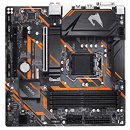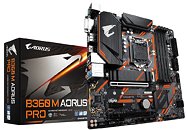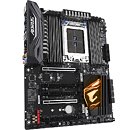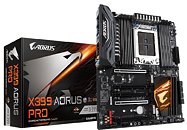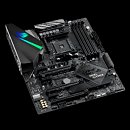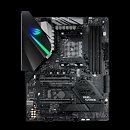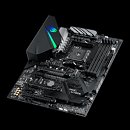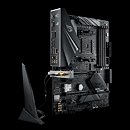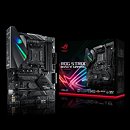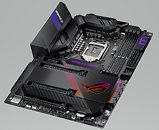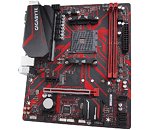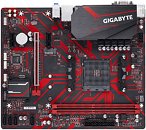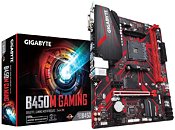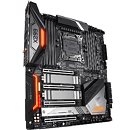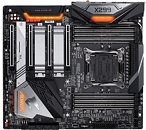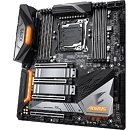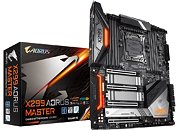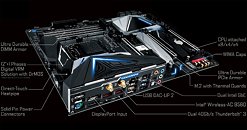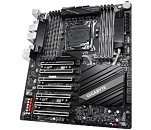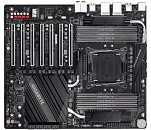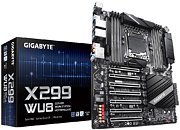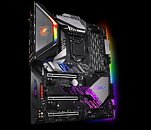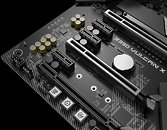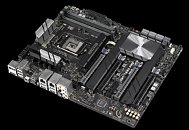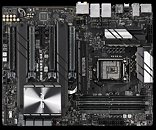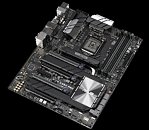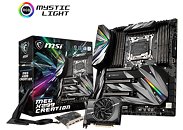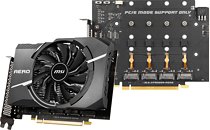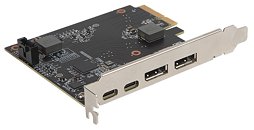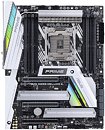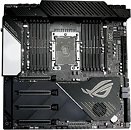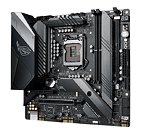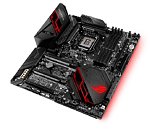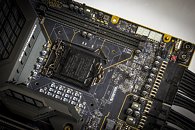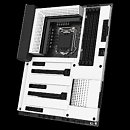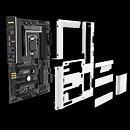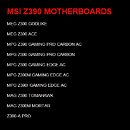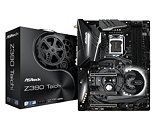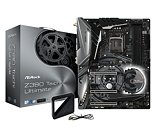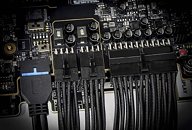
GIGABYTE Intros B360 M Aorus Pro Motherboard
GIGABYTE introduced the B360 M Aorus Pro, a gaming-grade micro-ATX motherboard part of its new Aorus branding. The board features a quasi-premium feature-set that passes on savings from a more cost-effective CPU VRM to additional features, such as a more premium onboard audio, or WLAN. Built with a 240 mm x 240 mm PCB that maximizes the micro-ATX form-factor, the board draws power from a combination of 24-pin ATX and 8-pin EPS, and conditions power for the CPU with a 4+2 phase VRM that's cooled by enlarged heatsinks. The CPU socket is wired to four DDR4 DIMM slots, and a reinforced PCI-Express 3.0 x16 slot. The second slot is electrical gen 3.0 x4, and wired to the PCH.
Despite its size, the B360 M Aorus Pro packs three M.2 slots: an M.2-22110 with PCI-Express 3.0 x4 wiring and heatsink, an M.2-2280 slot with PCI-Express 3.0 x2 and SATA 6 Gbps wiring, and a third E-key 30 mm slot with x1 wiring for CNVi 802.11ac Wave2 2T2R WLAN cards. USB connectivity includes two USB 3.1 gen 2 ports (including a type-C port), and four USB 3.1 gen 1. Networking is care of a 1 GbE interface pulled by an Intel i219-V controller. The onboard audio solution combines a Realtek ALC892 CODEC with audio-grade capacitors and ground-layer isolation. The board features a unique in-PCB RGB LED diffuser, GIGABYTE didn't reveal pricing, although we expect it to go for around $90.
Despite its size, the B360 M Aorus Pro packs three M.2 slots: an M.2-22110 with PCI-Express 3.0 x4 wiring and heatsink, an M.2-2280 slot with PCI-Express 3.0 x2 and SATA 6 Gbps wiring, and a third E-key 30 mm slot with x1 wiring for CNVi 802.11ac Wave2 2T2R WLAN cards. USB connectivity includes two USB 3.1 gen 2 ports (including a type-C port), and four USB 3.1 gen 1. Networking is care of a 1 GbE interface pulled by an Intel i219-V controller. The onboard audio solution combines a Realtek ALC892 CODEC with audio-grade capacitors and ground-layer isolation. The board features a unique in-PCB RGB LED diffuser, GIGABYTE didn't reveal pricing, although we expect it to go for around $90.

